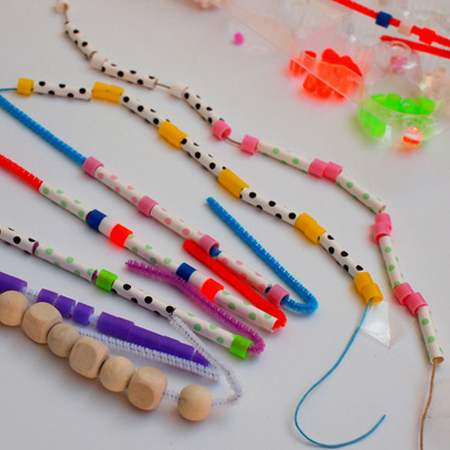 Image from PBS Kids for Parents.
Image from PBS Kids for Parents.Binary Bracelets
- Advanced
- Not Messy
- 45 Minutes
- Indoor
You Will Need
3 different colors of beads (one color represents 0, one color represents 1, and one color is used as a spacer)
String
ASCII Binary Alphabet
| A | 1000001 | B | 1000010 | C | 1000011 | D | 1000100 | E | 1000101 |
| F | 1000110 | G | 1000111 | H | 1001000 | I | 1001001 | J | 1001010 |
| K | 1001011 | L | 1001100 | M | 1001101 | N | 1001110 | O | 1001111 |
| P | 1010000 | Q | 1010001 | R | 1010010 | S | 1010011 | T | 1010100 |
| U | 1010101 | V | 1010110 | W | 1010111 | X | 1011000 | Y | 1011001 |
| Z | 1011010 |
Directions
- Assign a bead color to represent 1, 0, and spaces.
- For each letter of their name, have your child string one of the beads. For example, if the first letter of your child’s name is “S” and you have chosen a purple bead for 1, a blue bead for 0, and a black bead for the space, your child would string the following onto their string: Purple bead, blue bead, purple bead, two blue beads, two purple beads
How it works
ASCII is a simple programming language used in basic computer programming. This activity gets children to think about computer languages, but it also helps them practice other skills such as making patterns, fine motor skills, and replication.
Key Words
- ASCII
- ASCII (pronounced a-skee) is a table of characters for computers. It is binary code used by electronic equipment to handle text using the English alphabet, numbers, and other common symbols. ASCII is an abbreviation for American Standard Code for Information Interchange.
- Binary
- The binary number system is a base-2 number system. This means it only has two numbers: 0 and 1. The number system that we normally use is the decimal number system, which is base 10.
